"You can have data without information, but you cannot have information without data" – Daniel Keys Moran
While data is now ubiquitous, data science is about leveraging this data and discerning new information which can help in making more informed business decisions.
At Market Ease, we collect and monitor a large amount of data across the different digital marketing platforms that we work with; including Google Ads, Google Analytics and Facebook Ads.
We make use of and employ different statistical methods to analyse data using different software such as Python and R.
Further, visualising this data with the help of detailed illustrations and plots, provides us with further insight which enable us to communicate our findings with clients.
The following are three examples of how we have worked with some of our clients to deliver useful insights and make data driven decisions:
1. Using Data To Determine Campaign Daily Budgets
What are the factors that should be considered when making a decision about Daily Marketing Budget Allocation?
Most of our clients are aware that their business tends to generate more purchases and conversions during certain days of the week and during certain times of the year.
Intuitively, they would plan to allocate more money and resources on these days to boost their conversions.
But exactly how much more should they be spending on these days to elevate their profit(revenue)/conversions?
We helped one of our clients answer this question by building a Daily Budget Optimisation Model using the statistical analysis program R.
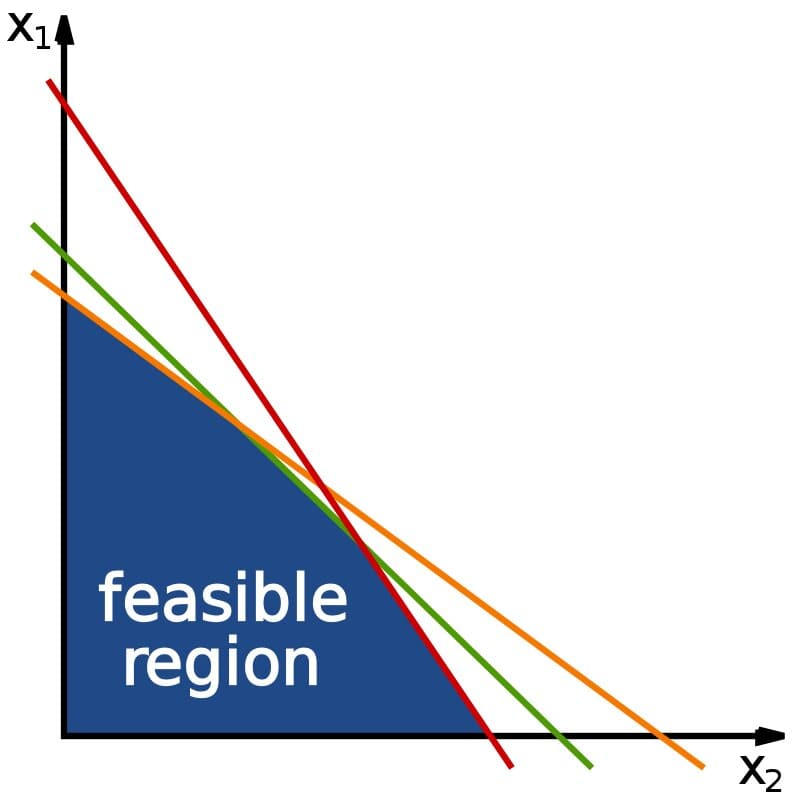
This model is based on historical data and considers various factors such as the 'Purchase Conversion Rate' and 'Search Impression Share' for different Ad Campaigns.
The model is flexible and can be repeatedly tweaked depending on the client’s daily minimum and maximum budget requirements.
The client now has an optimised daily budget allocation plan that is based on data rather than intuition.
2. The Correlation Between Landing Page Experience And Quality Score
The Landing Page Experience (LPE) is a measure that Google uses to assess the relevance and usefulness of a website's landing page to the clients who click on the ad.
Certain factors such as the Quality Score (which is Google’s rating of the quality and relevance of ads, keywords and landing pages) can be pivotal to the success of an Ad campaign.
But what role does the Landing Page Experience of a client’s website play in determining these crucial factors?
We performed a detailed statistical analysis of every keyword for a particular client's Google Ads campaign in order to discover if we could find any useful correlations.
We uncovered the following:
a) A better Landing Page Experience is associated with higher Quality Scores.
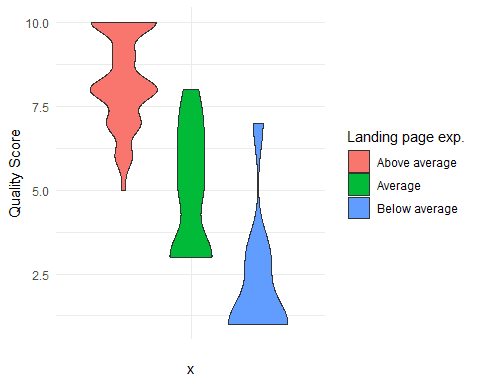
The diagram above demonstrates that keywords with better Landing Page Experiences also tend to have better Quality Scores.
The screenshot below shows a summary of raw data that was collected from a client’s
Google Ads account.

The correlation plot below, made by visualising the above data, shows the correlations between the different metrics that were analysed.
From the diagram, we can see that the Quality Score is highly correlated with an Above Average Landing Page Experience, with a positive correlation coefficient of 0.65.
Also, an Above Average Landing Page Experience was found to be more highly correlated to higher Quality Scores than any other metric.
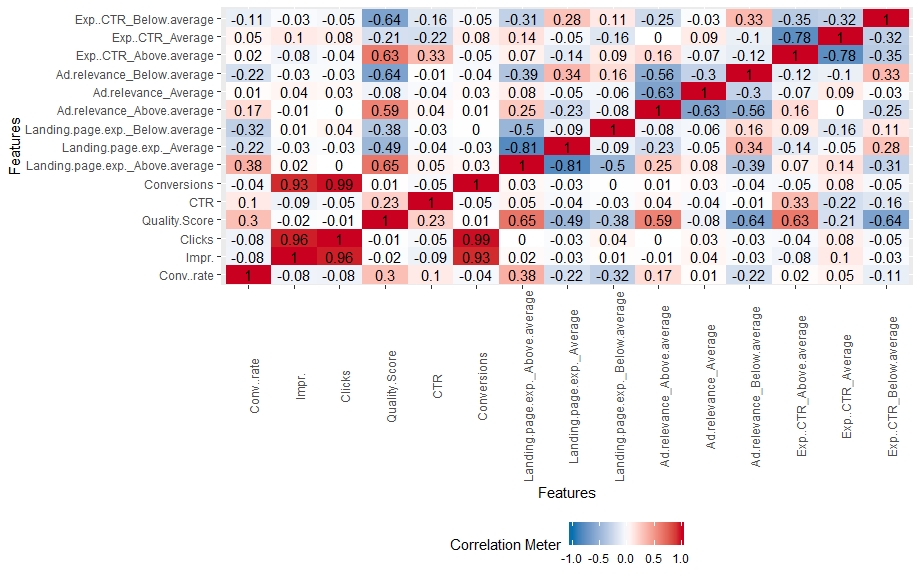
b) A better Landing Page Experience is associated with lower bounce rates:
The bounce rate is the percentage of all sessions on a site in which a user only viewed a single page.
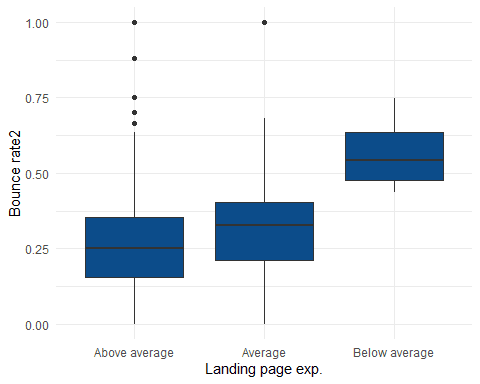
The box plot above shows that keywords with higher landing page experiences are generally associated with lower bounce rates.
c) A better Landing Page Experience is associated with better Search Impression Share:
Search impression share is the percentage of impressions that your ads receive compared to the total number of impressions that your ads could get
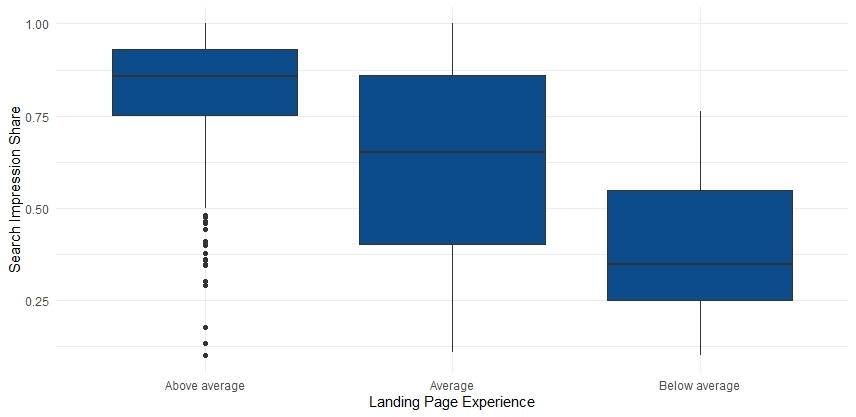
The plot above illustrates that an improvement in Landing Page Experience is associated with an improvement in Search Impression Shares.
3. Analysing Performance
An analysis of different metrics gives us an idea about which ads (or more specifically keywords) are the most successful and which ads are not performing well.
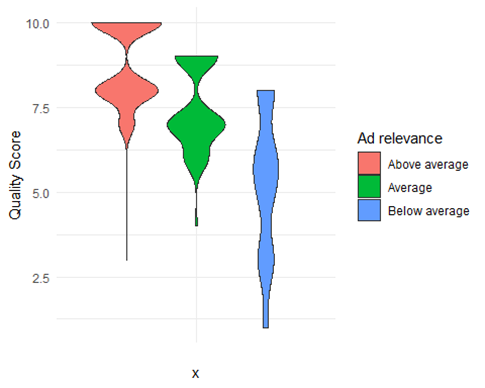
We analysed various metrics such as Click Through Rates (CTR), Avg. Cost per Click (Avg. CPC), Conversion Rates, and Return on Ad spend (ROAS) for a number of our clients.
This helped us identify underperforming keywords so that these keywords could be optimised appropriately or replaced.
This analysis of keywords is carried out continually to improve the performance of keywords, thereby increasing the effectiveness of Ad Campaigns.
Further, we are working on using data collected from our client’s Ad Campaigns to build machine learning models that have the capacity to predict certain crucial metrics which determine the effectiveness of an ad.
This will equip us with vital insights that can be altered according to our clients needs, to design and create successful Ad Campaigns in the future.
Conclusion
To conclude, we are continuously developing a better understanding of our clients from the information that we collect across their marketing activity.
Although marketing is never black and white, we are gradually improving the probability that our marketing decisions will improve their marketing performance.

